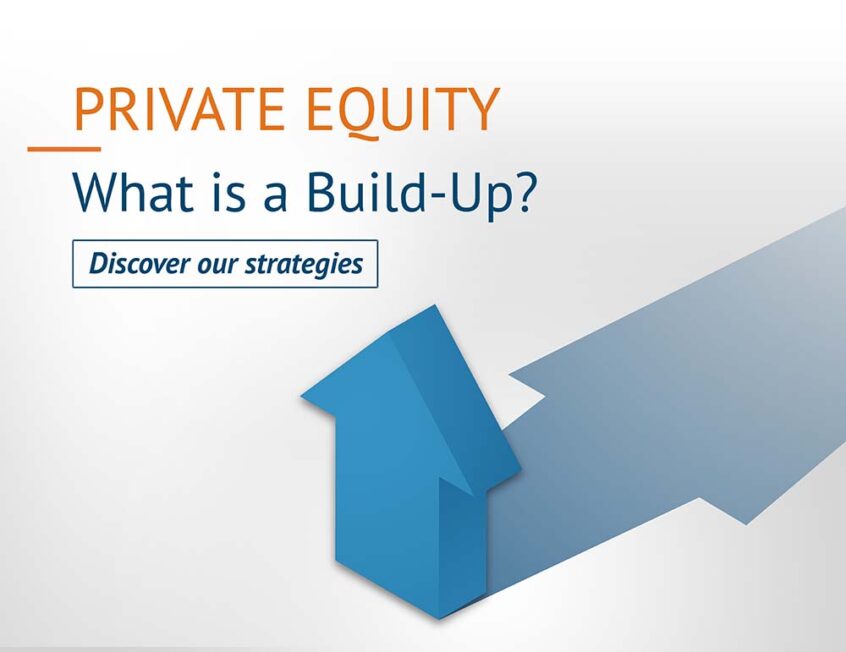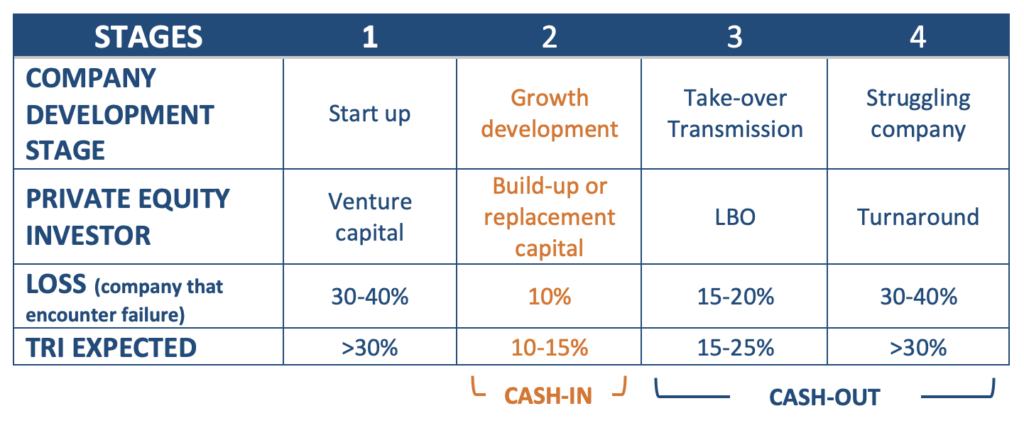We can identify a build-up operation as an investment of equity destined to finance the development of a company and/or the purchase of shareholder positions.
In build-up, we have 2 types of operations. They provide an answer to a specific problematic:
I. Undertaking an increase in capital: CASH-IN
The operation brings some additional equity to a company. This operation brings direct cash to the company. That will allow it to finance its internal growth.
How to do? we have 2 main ways:
- increase of equity: that means, the company release new shares
- convertible bonds: the company use some financial instruments that will give access for the new investors to the company’s equity through convertible bonds
II. Shareholding purchase operations for geographical restructuring of a company’s equity: CASH-OUT
In this case, the shareholder or the founder want to leave the company, motivated by many reasons: retirement, another project, or another investment in the case of a sleeping partner…
The new investor will use his cash for the purchase of the shares to the seller.
In “cash-out” operations, the company’s return must be sufficient to finance internal and external growth.
A cash out operations don’t exclude that the new investor needs to bring some new cash in the company (equity, current shareholder account, bonds, etc.)
When to call for build-up investor?
First, let’s have a look on the following GLOBAL SCHEME, at what time we could meet a build-up operation.
We will find a CASH-IN operation in the stage of growth: internal and/or external growth.
A cash in operation will bring some new cash. That will secure the development by limiting the debt level or maintaining the debt/equity ratio at a reasonable level. This situation would permit the company to get new future loans.
Most of the time, we’ll mainly meet CASH-OUT operations in the 3rd and 4th stages.
We could meet many different situations in the company, as the following examples:
- RETIREMENT: the founder leaves the company because of retirement. In this case, the LBO operation is a good way. We can also have a LMBO, when the staff is motivated to keep his job and make the company growth with a new project
- PRIVATE EQUITY – end of engagement: we are with a private equity funds. In this case, the internal rules manage the operation. We could also meet sleeping partners who decide to leave the company
- DISPUTE – discordance between shareholders: in the case, there’s emergency to find an issue and deal
- STRUGGLING COMPANY: in this case, it’s emergent to find a turnaround strategy. Most of the time, new shareholders or investors come in the company and provide a new plan: diversification, new investments, new organization, etc.
CÉLIANCE: a new player in private equity. What are our strengths and competitive advantages?
In 2021, CELIANCE put together a skilled team with strong experience in the private equity sector. Our aim is to offer our future clients a range of services that is at the same time both comprehensive and different from that of the leading players in town.
In particular, the CELIANCE team will be able to accompany your CASH IN operation with finding new cash and private equity funds.
If you are in a CASH OUT situation, we provide you with the financial advice and solutions: meeting new investors, private equity funds, financial valuation, negotiation…
PROXIMITY, RESPONSIVENESS, AGILITY and EXPERTISE are the main winning features of this new, young, ambitious team.
In June 2021, CÉLIANCE joined the famous LPEA association!
Don’t miss our forthcoming publications.
See you soon!


